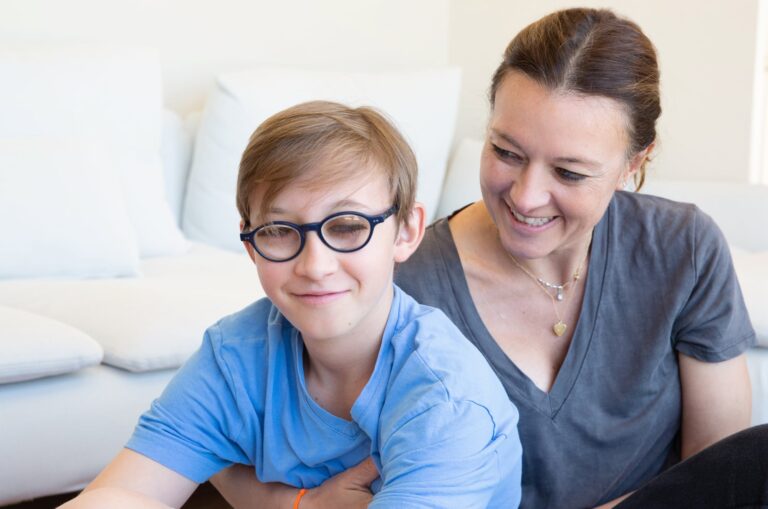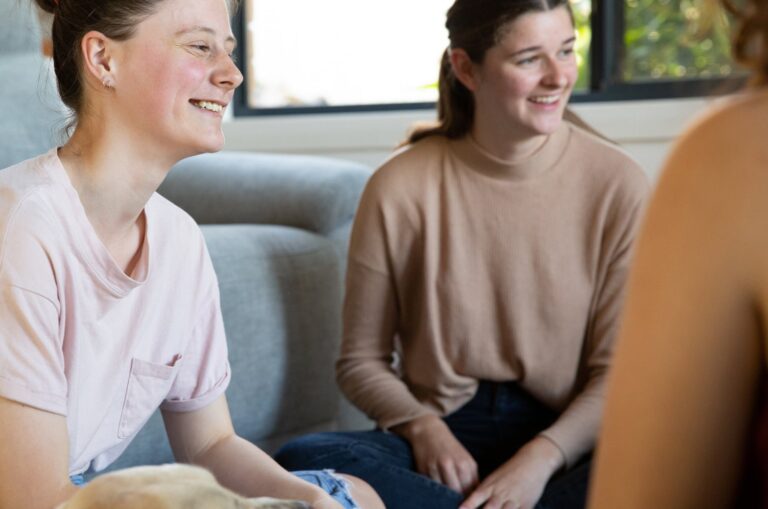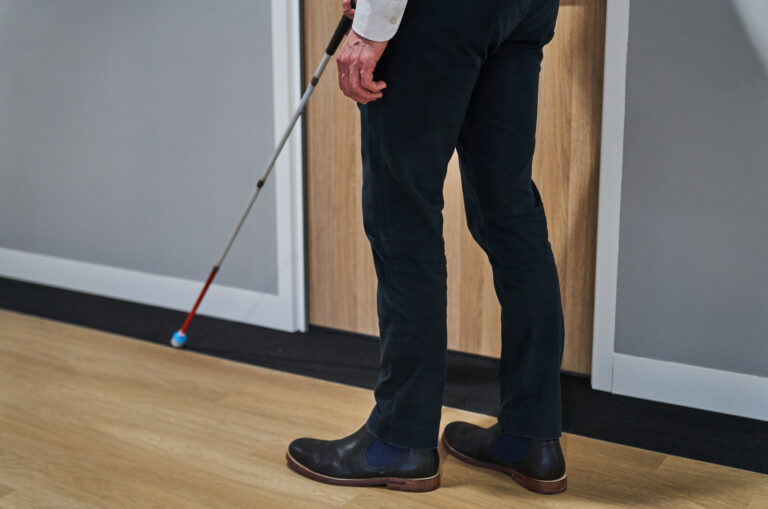Comparing Orientation and Mobility for young children versus teenagers
Through safe play and by exploring new environments with confidence, we learn about ourselves, each other, and how to be part of a community.
Children with low vision or blindness are no different. However, they need to develop a different set of skills to understand and move through the world. These skills are taught in Children’s Mobility training.
In this article we’ll look at some of the valuable techniques a child can learn during this training. We’ll also consider how the training changes and can be built upon as the recipient moves into their teenage years.
Keep in mind that this is not an exhaustive list of every possible kind of training provided to children and teenagers. The right training for you or your child will depend on their specific needs and circumstances.
Orientation and Mobility for young children
Mobility training helps a child build on their personal goals as they transition from home to kinder to school. It can include skills to make new friends and interact with other people in their community.
More specifically, it can include:
- Developing foundational orientation and mobility skills through play. That training can involve people and games that are already part of the child’s life, for example:
- Learning spatial and environmental concepts by using Lego to build a map of a street block.
- Understanding how to use senses like hearing for interpreting an environment – the sound of a truck versus the sound of a lawn mower or the smell of a bakery, for instance.
- Developing skills in using a mobility aid such as a long cane or wheelchair to move safely through space.
- Learning to confidently explore and travel around the home, kinder, school, and outdoor environments.
- Learning to play safely by moving more self-assuredly and developing techniques for increased awareness of the world.
- Preparing for teenage years by beginning to get an understanding of road and traffic concepts, and independently travelling to and from school.
Children’s Mobility training teaches your child valuable practical skills while encouraging them to make friends, be creative, and explore their potential. Importantly all Children’s Mobility training offered by Guide Dogs is delivered with a focus on fun.
Support is usually provided one-one-one in an environment where your child is most comfortable; that location will also usually depend on their goals. It could be in your home, at school, or out and about in the general community.
Guide Dogs offers Children’s Mobility training as part of individual programs, camps, group programs, and workshops.
Orientation and Mobility for teenagers
Orientation and Mobility training for teenagers differs from the training mentioned above, which is specific to children under the age of 13.
Teenagers tend to be eager to have more responsibility and set their own goals; they also often like to develop plans for achieving those goals. An Orientation and Mobility Specialist will support a teenager by building on the foundational skills learnt as a child.
Training specific to teenagers includes:
- Safe travelling skills, including skills that help a young person with low vision or blindness to move through the community, catch public transport, respond to fellow pedestrians and commuters, as well as use of mobility aids such as long canes to travel with confidence.
- More complex skills than for a young child. Training for teenagers is, naturally, more advanced than it is for children, aiming to achieve an age-appropriate level of independent travel within the community. That includes more involved tasks, such as route planning, using technology, and navigating busy streets and intersections.
- Different social factors. Teenagers want to connect with their peers, make new friendships, and may be more self-conscious than a younger child about using mobility aids, such as a cane, especially when out socialising. Orientation and Mobility Specialists address these social factors and support teenagers to build confidence in their abilities. They may provide training in social skills, such as how to ask for help or how to interact with others.
- Preparation for adult years, including moving from school into tertiary education, moving out of home, and perhaps planning to travel.
Want to know more about Orientation and Mobility training?
Our Orientation and Mobility Services can support you or your child to get where you want to go with more confidence, ease, and safety.
You might also like
Ready to continue?
Seems like you have filled this form earlier. Let’s pick up where you left off.










